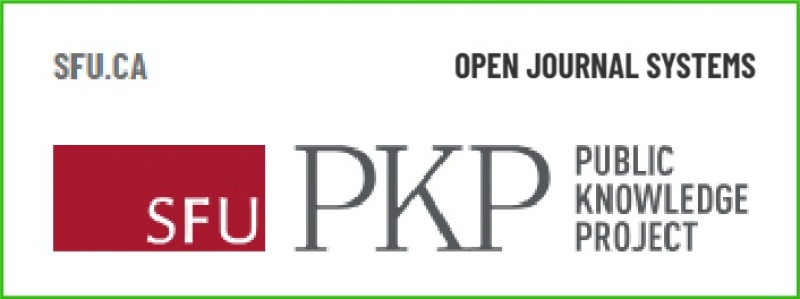Pembentukan Biogas pada Media Eceng Gondok dengan Starter Kotoran Ternak
DOI:
https://doi.org/10.36312/bjkb.v2i4.128Keywords:
Manure, Water Hyacinth, Biogas, Slurry.Abstract
Animal manure and water hyacinth become waste if not used. One of its uses is as raw material for biogas. The purpose of this study was to determine the effect of the type of manure on the formation of biogas from water hyacinth as seen from: 1) the rate of biogas formation, 2) the temperature of the slurry, 3) the pH of the slurry, and 4) the weight of the biogas produced. Research with Completely Randomized Design (CRD) consisted of five treatments (P); P1: cow dung + water hyacinth + water, P2: buffalo dung + water hyacinth + water, P3: goat dung + water hyacinth + water, P4: horse dung + water hyacinth + water, and P5: broiler chicken dung + water hyacinth + water . Each treatment was repeated 4 times to obtain 20 experimental units. The composition of the raw material mixture consists of 8 kg of water hyacinth chopped 2 cm + 3 kg of livestock manure + 2 liters of water. Parameters observed were: rate of gas formation, slurry pH, slurry temperature, and weight of biogas produced. The research was conducted at the Biology Education Laboratory, Faculty of Teacher Training and Education, Kapuas Sintang University. Data were analyzed by ANOVA at 5% significance level using SPSS 16.0 and BNT test if there was a significant difference between treatments. The results showed that the type of manure only had a significant effect on the weight of biogas formed, but had no significant effect on the rate of biogas formation, slurry pH, and slurry temperature. Thus the five types of manure can be used as a starter in the manufacture of biogas made from water hyacinth.
Downloads
References
Agusto, F. B., & Okosun, K. O. (2010). Optimal Seasonal Biocontrol for Eichhornia Crassipes. International Journal of Biomathematics, 3(3), 383-397. https://doi.org/10.1142/S1793524510001021
Bereded, N. K., Curto, M., Domig, K. J., Abebe, G. B., Fanta, S. W., Waidbacher, H., & Meimberg, H. (2020). Metabarcoding Analyses of Gut Microbiota of Nile Tilapia (Oreochromis niloticus) from Lake Awassa and Lake Chamo, Ethiopia. Microorganisms, 8(7), 1-20. https://doi.org/10.3390/microorganisms8071040
Bhattacharya, A., & Kumar, P. (2010). Water Hyacinth as a Potential Biofuel Crop. EJEAFChe : Electronic Journal of Environmental, Agricultural and Food Chemistry, 9(1), 112-122.
Bick, E., Lange, E. S. D., Kron, C. P., Soler, L. D. S., Liu, J., & Nguyen, H. D. (2020). Effects of Salinity and Nutrients on Water Hyacinth and its Biological Control Agent, Neochetina Bruchi. Hydrobiologia, 847(15), 3213-3224. https://doi.org/10.1007/s10750-020-04314-x
Budiyono, B., Khaerunnisa, G., & Rahmawati, I. (2013). Pengaruh pH dan Rasio COD: N terhadap Produksi Biogas dengan Bahan Baku Limbah Industri Alkohol (Vinasse). Eksergi, 11(1), 1-6. https://doi.org/10.31315/e.v11i1.324
Costa, J. D. (2011). Optimasi Produksi Biogas pada Anaerobic Digester Biogas Type Horizontal Berbahan Baku Kotoran Sapi dengan Pengaturan Suhu dan Pengadukan. Thesis. Institut Teknologi Sepuluh November.
Gannon, M. (2014). Water Hyacinth-In and Out of Your Water Garden. Gannon: Full Service Aquatics.
Gebregiorgis, F. Y. (2017). Management of Water Hyacinth (Eichhornia crassipes [Mart.] Solms) Using Bioagents in the Rift Valley of Ethiopia. Wageningen: Wageningen University. https://doi.org/10.18174/401611
Gumisiriza, R., Hawumba, J. F., Okure, M., & Hensel, O. (2017). Biomass Waste-to-Energy Valorisation Technologies: A Review Case for Banana Processing in Uganda. Biotechnology for Biofuels, 10(11), 1-29. https://doi.org/10.1186/s13068-016-0689-5
Irawan, D., & Khudori, A. (2014). Pengaruh Suhu Anaerobik terhadap Hasil Biogas Menggunakan Bahan Baku Limbah Kolam Ikan Gurame. TURBO, 4(1), 17-22. http://dx.doi.org/10.24127/trb.v4i1.3
Iriani, P., Suprianti, Y., & Yulistiani, F. (2017). Fermentasi Anaerobik Biogas Dua Tahap dengan Aklimatisasi dan Pengkondisian pH Fermentasi. Jurnal Teknik Kimia dan Lingkungan, 1(1), 1-10. https://doi.org/10.33795/jtkl.v1i1.16
Isebe, T. I. (2016). Phytochemical Composition and Antibacterial Activity of Eichhornia crassipes in Lake Victoria, Kisumu. International Journal of Scientific & Technology Research, 5(9), 45-52.
Jones, J. L., Jenkins, R. O., & Haris, P. I. (2018). Extending the Geographic Reach of the Water Hyacinth Plant in Removal of Heavy Metals from a Temperate Northern Hemisphere River. Scientific Reports, 8(11071), 1-15. https://doi.org/10.1038/s41598-018-29387-6
Kasinski, S. (2020). Mesophilic and Thermophilic Anaerobic Digestion of Organic Fraction Separated During Mechanical Heat Treatment of Municipal Waste. Applied Sciences, 10(7), 1-20. https://doi.org/10.3390/app10072412
Kementerian PUPR. (2016). Menteri PUPR Meninjau Bendungan Batujai. Kementerian Pekerjaan Umum dan Perumahan Rakyat.
Koutika, L. S., & Rainey, H. J. (2015). A Review of the Invasive, Biological and Beneficial Characteristics of Aquatic Species Eichhornia crassipes and Salvinia molesta. Applied Ecology and Environmental Research, 13(1), 263-275. https://doi.org/10.15666/aeer/1301_263275
Maga, A. (2014). BWS NT I Tingkatkan Fungsi Bendungan Batu Jai. Mataram: Antara News.
Mekuriaw, S., Tegegne, F., Tsunekawa, A., & Ichinohe, T. (2018). Effects of Substituting Concentrate Mix with Water Hyacinth (Eichhornia crassipes) Leaves on Feed Intake, Digestibility and Growth Performance of Washera Sheep Fed Rice Straw-Based Diet. Tropical Animal Health and Production, 50(1), 965-972. https://doi.org/10.1007/s11250-018-1519-5
Neves, N. G., Berni, M., Dragone, G., Mussatto, S. I., & Carneiro, T. F. (2018). Anaerobic Digestion Process: Technological Aspects and Recent Developments. International Journal of Environmental Science and Technology, 15(9), 2033-2046. https://doi.org/10.1007/s13762-018-1682-2
Oberholzer, I. G., & Hill, M. P. (2001). How Safe is the Grasshopper Cornops Aquaticum for Release on Water Hyacinth in South Africa? In: M. H. Julien, M. P. Hill, T. D. Center, & Ding Jianqing (eds.). Biological and Integrated Control of Water Hyacinth, Eichhornia crassipes. ACIAR Proceedings 102, 82-88.
Prabawa, I. D. G. P., & Nurmilatina, N. (2017). Analisis Kualitas Formula Pupuk Organik Pelet dari Eceng Gondok dan Tandan Kosong Kelapa Sawit. Jurnal Riset Industri Hasil Hutan, 9(1), 17-28. https://doi.org/10.24111/jrihh.v9i1.3003
Pujowati, P., Ridwan, M., Rusdiansyah, R., & Sofian, S. (2019). Respons Pertumbuhan dan Hasil Jagung Semi (Zea mays L.) dengan Penambahan Berbagai Dosis Pupuk Eceng Gondok dengan Aktivator 2 Trichoderma sp. Jurnal Agroekoteknologi Tropika Lembab, 2(1), 8-14. https://doi.org/10.35941/jatl.2.1.2019.2469.8-14
Putra, A. N., Ristian, S., Musfiroh., & Syamsunarno, M. B. (2020). Pemanfaatan Eceng Gondok (Eichornia crassipes) sebagai Pakan Ikan Nila: Efek terhadap Pertumbuhan dan Kecernaan Pakan. LEUIT : Journal of Local Food Security, 1(2), 77-82. http://dx.doi.org/10.37818/leuit.v1i2.10016
Renilaili. (2015). Enceng Gondok sebagai Biogas yang Ramah Lingkungan. Jurnal Ilmiah TEKNO, 12(1), 1-10.
Sari, S. N., Sutisna, M., & Pratama, Y. (2014). Biogas yang Dihasilkan dari Dekomposisi Eceng Gondok dengan Penambahan Kotoran Sapi sebagai Starter. Jurnal Institut Teknologi Nasional, 2(1), 1-10. https://doi.org/10.26760/rekalingkungan.v2i1.%25p
Sivasankari, B., & Ravindran, D. (2016). A Study on Chemical Analysis of Water Hyacinth (Eichornia crassipes), Water Lettuce (Pistia stratiotes). International Journal of Innovative Research in Science, Engineering and Technology, 5(10), 17566-17570. https://doi.org/10.15680/IJIRSET.2016.0510010
Turmuzi. (2016). Perbesar Daya Tampung Air, Bendungan Batujai Lombok Tengah Dikeruk. Lombok Tengah: Cendananews.com.
Winarsih, W. H. (2018). Penyakit Ternak yang Perlu Diwaspadai Terkait Keamanan Pangan. Cakrawala, 12(2), 208-221. https://doi.org/10.32781/cakrawala.v12i2.270
Yonathan, A., Prasetya, A. R., & Pramudono, P. (2012). Produksi Biogas dari Eceng Gondok (Eichhornia crassipes): Kajian Konsistensi dan pH Biogas yang Dihasilkan. Jurnal Teknologi Kimia dan Industri, 1(1), 412-416.

Downloads
Published
How to Cite
Issue
Section
License
Copyright (c) 2022 Azhar Armia Kurniawan & Kurnia Abdullah Samani

This work is licensed under a Creative Commons Attribution-ShareAlike 4.0 International License.
-
Attribution — You must give appropriate credit, provide a link to the license, and indicate if changes were made. You may do so in any reasonable manner, but not in any way that suggests the licensor endorses you or your use.
-
ShareAlike — If you remix, transform, or build upon the material, you must distribute your contributions under the same license as the original.










































